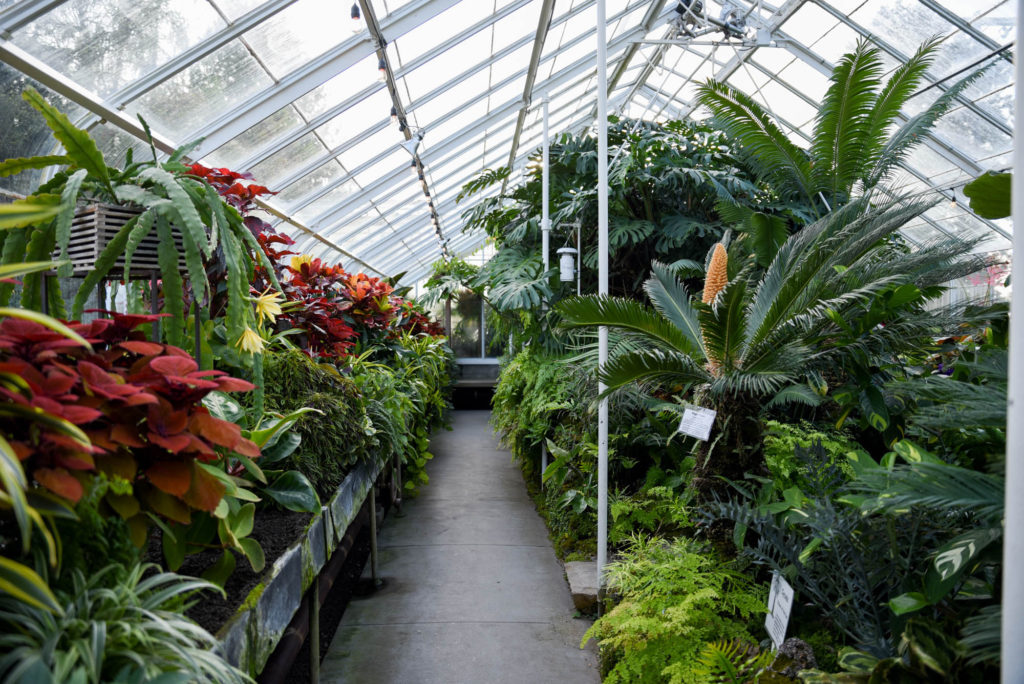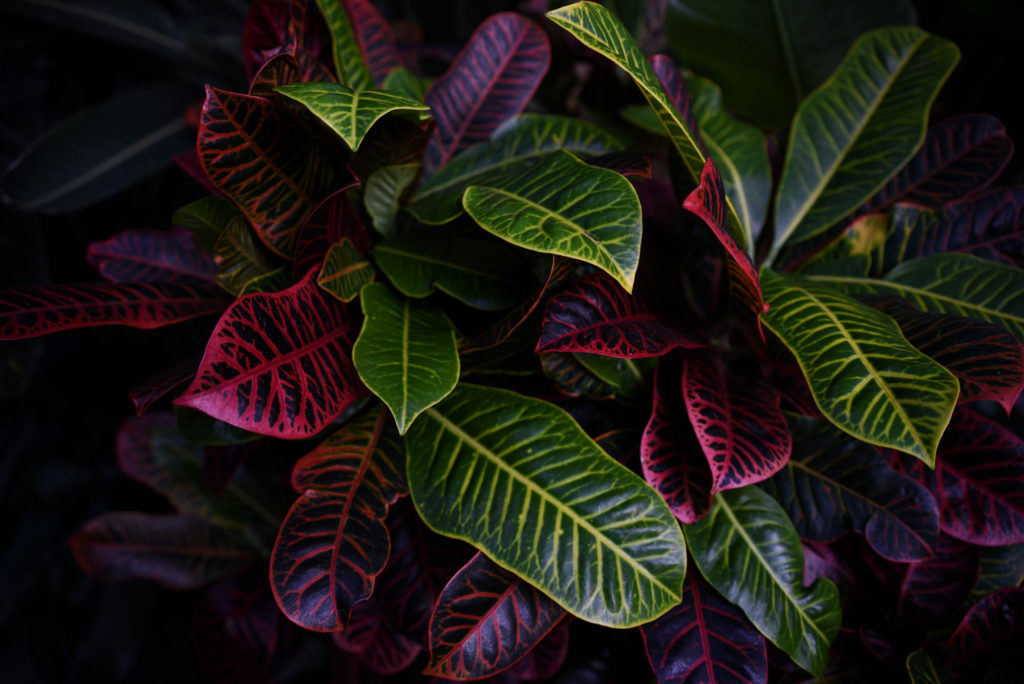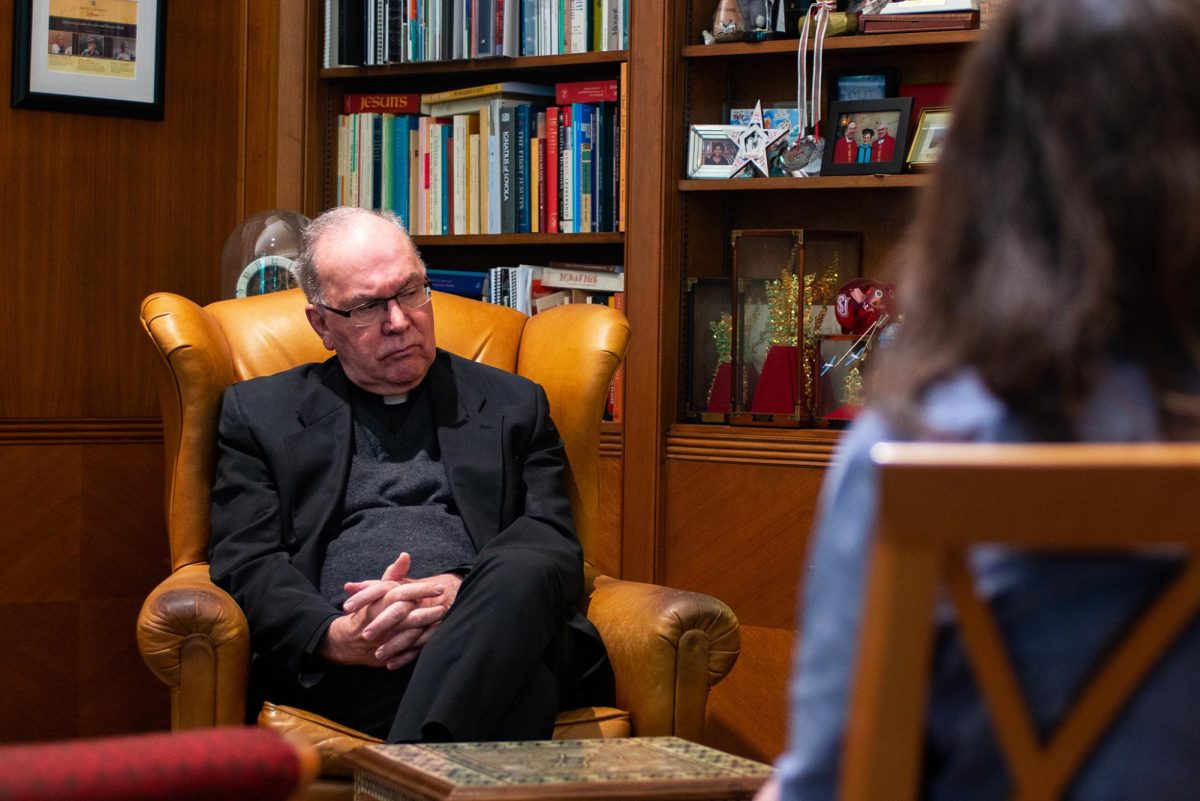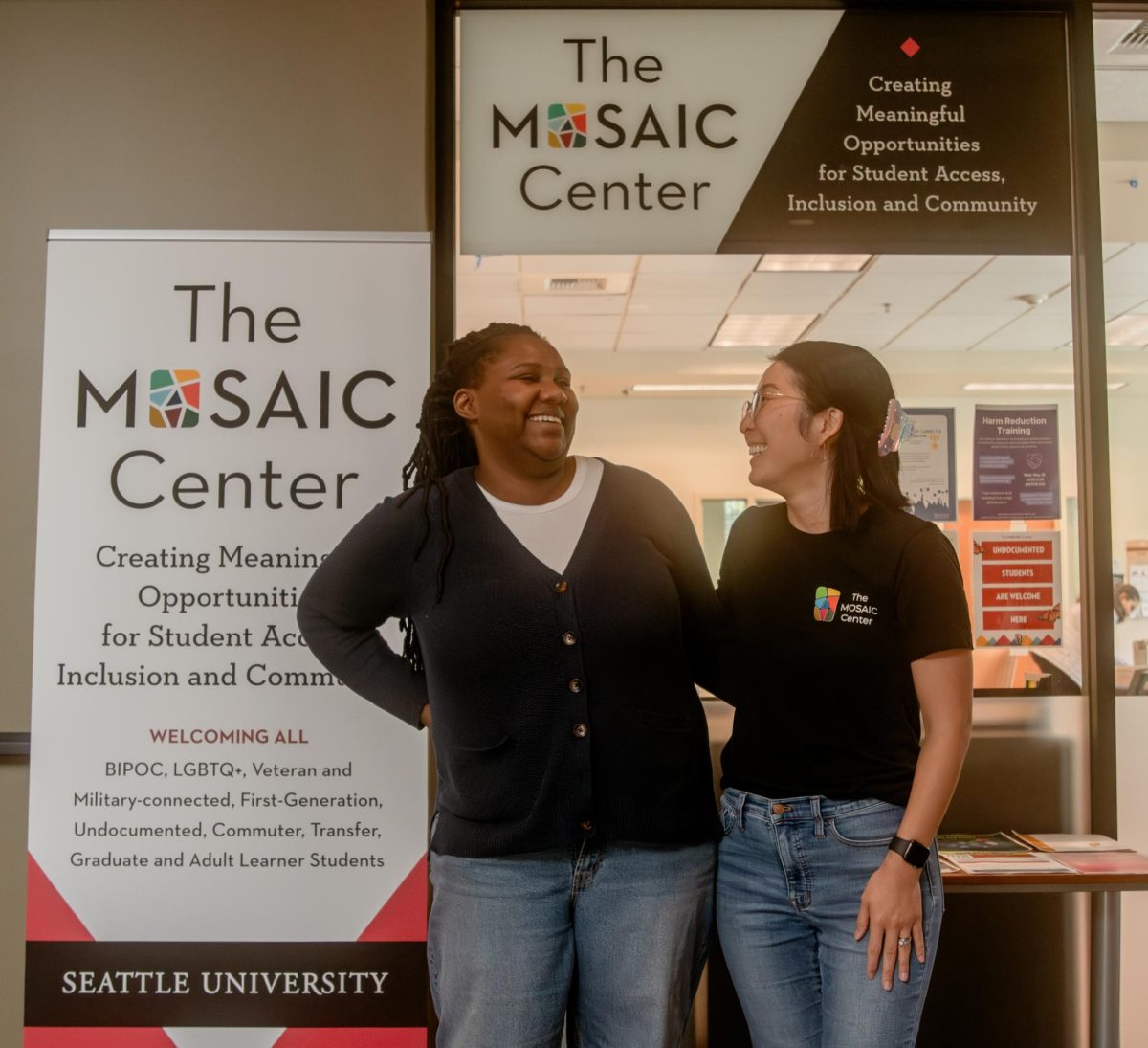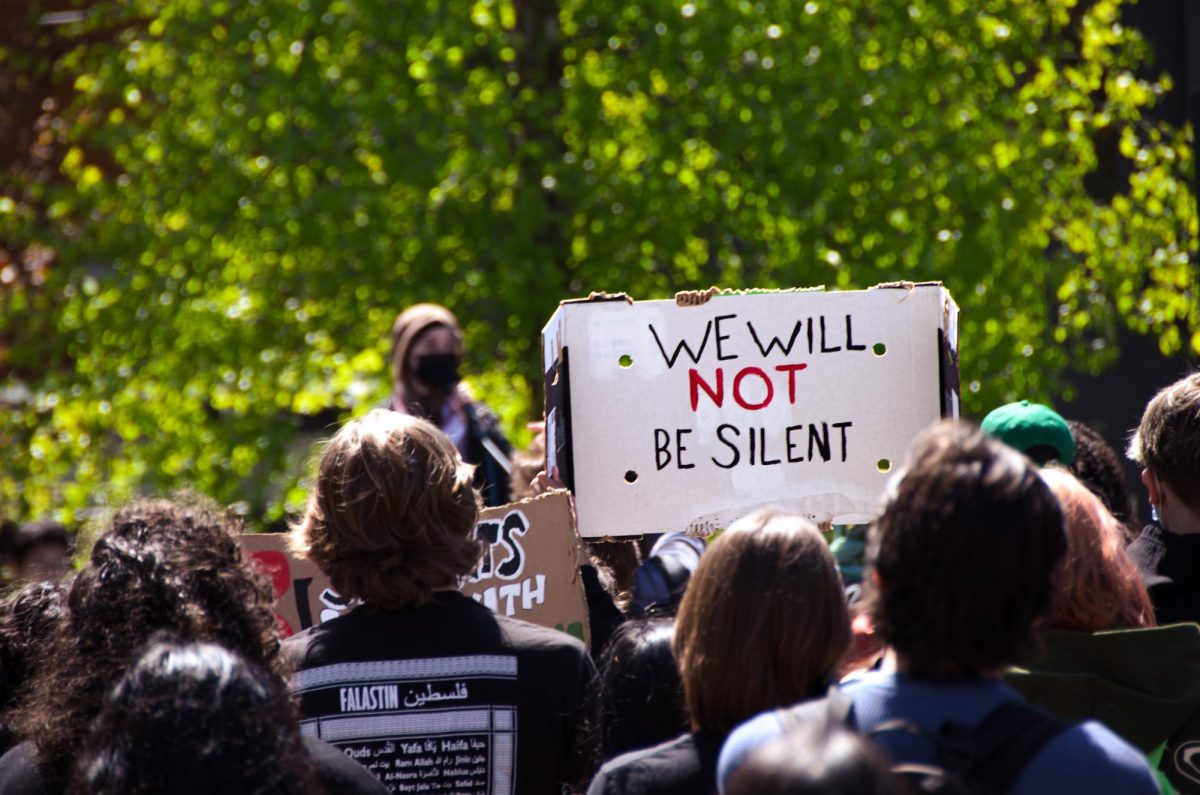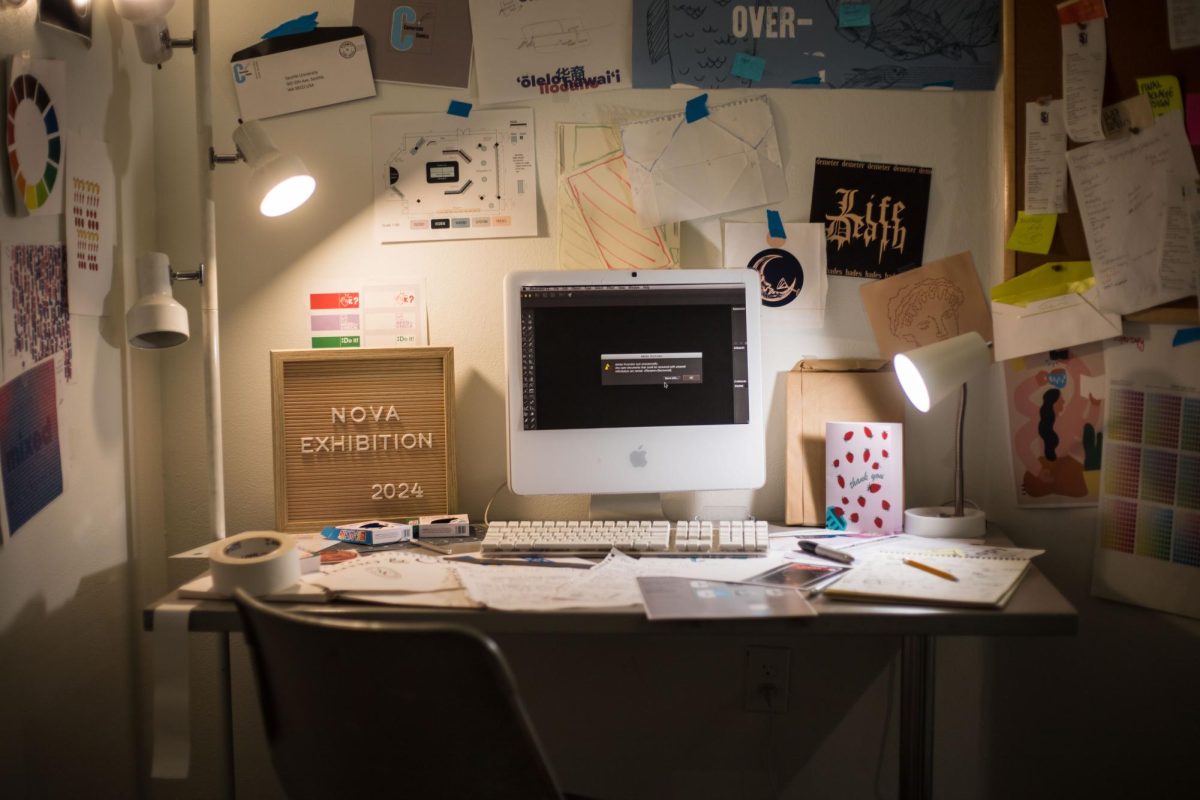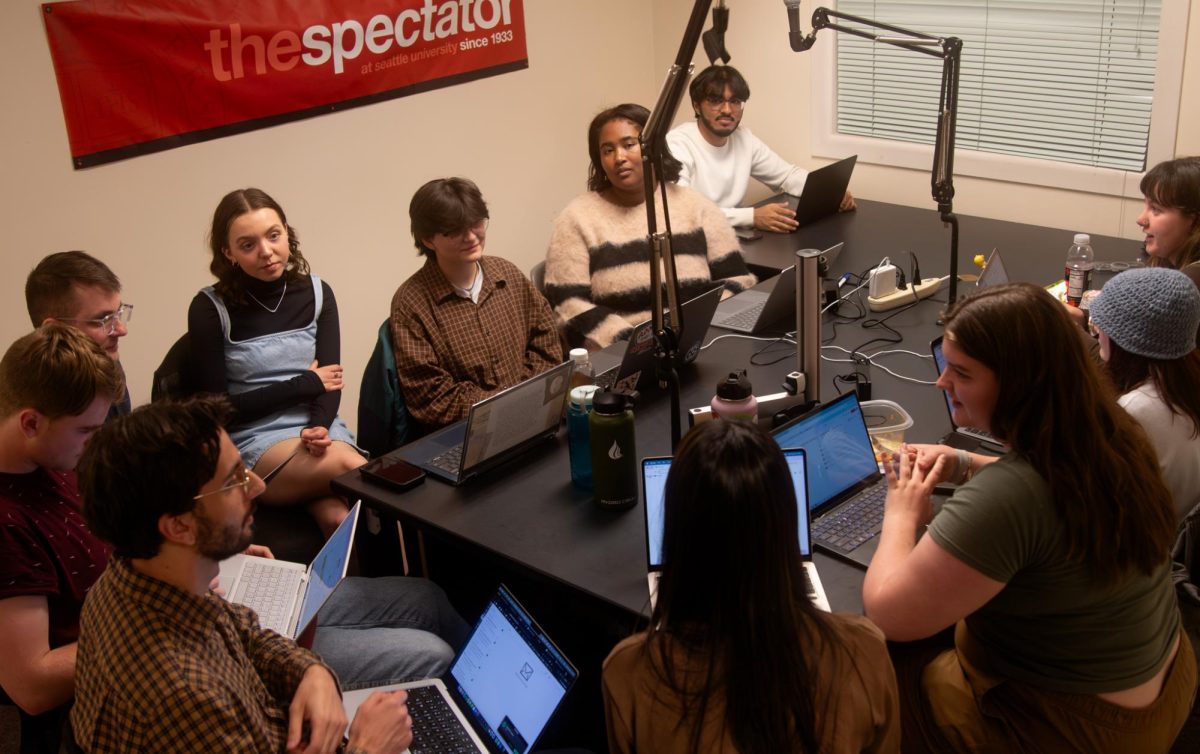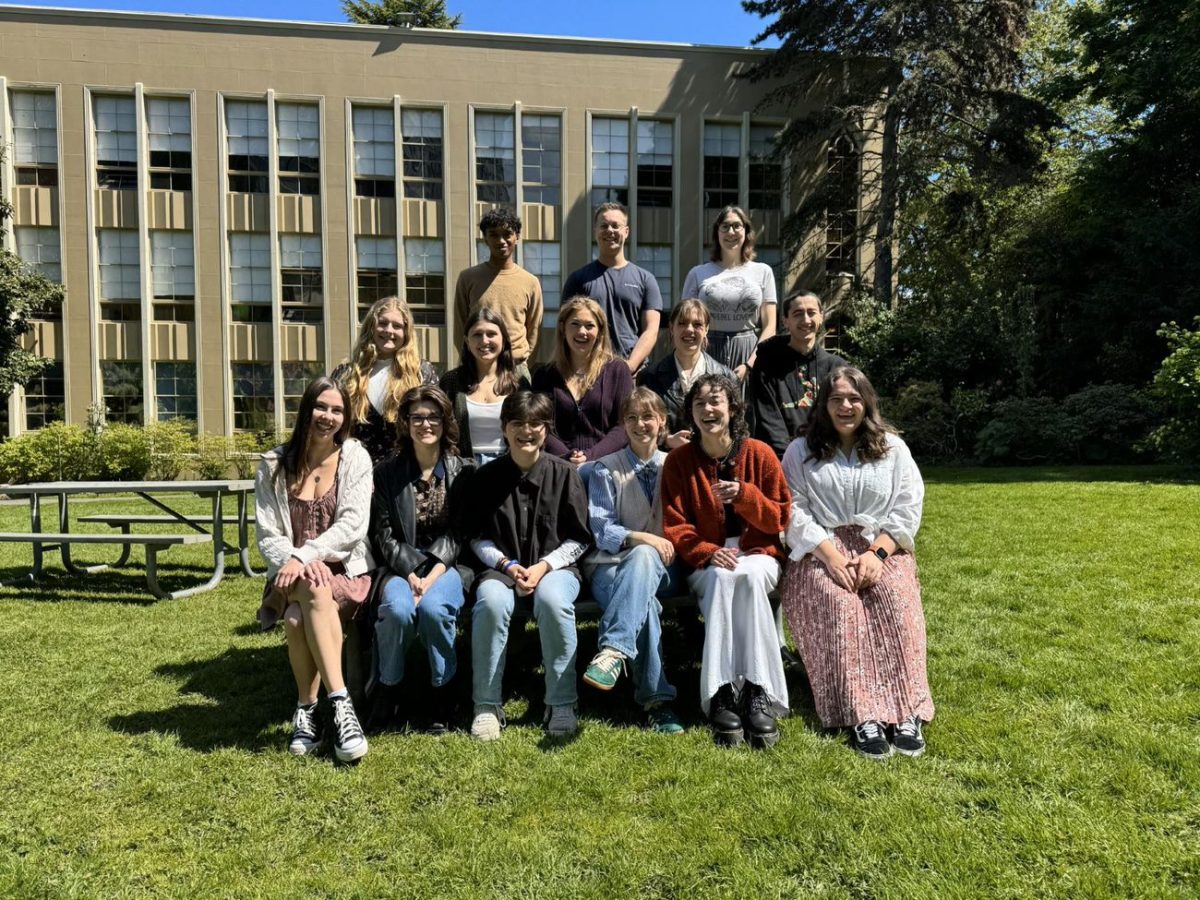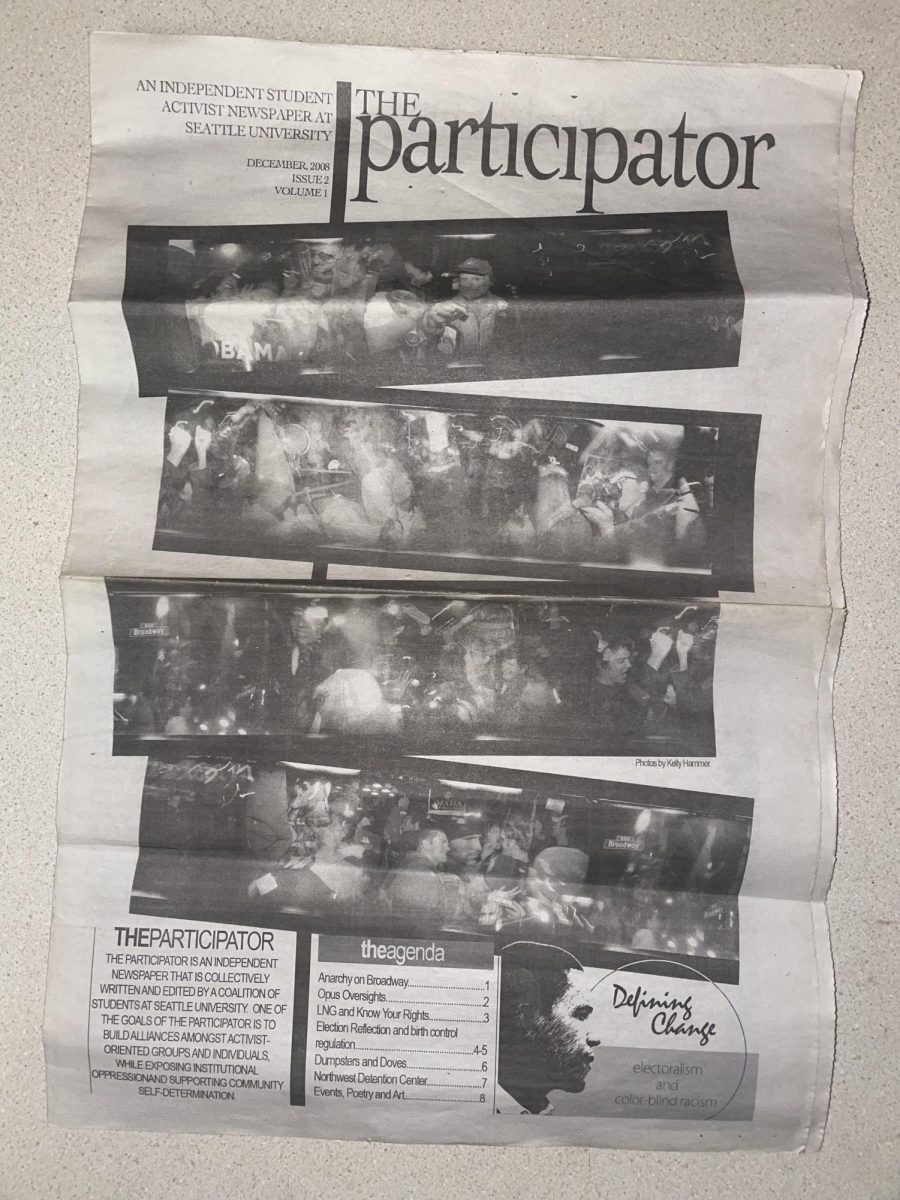Last week was the 47th annual Earth Day, and people around the world participated in events like the March for Science in an effort to address growing concerns on the future of the environment.
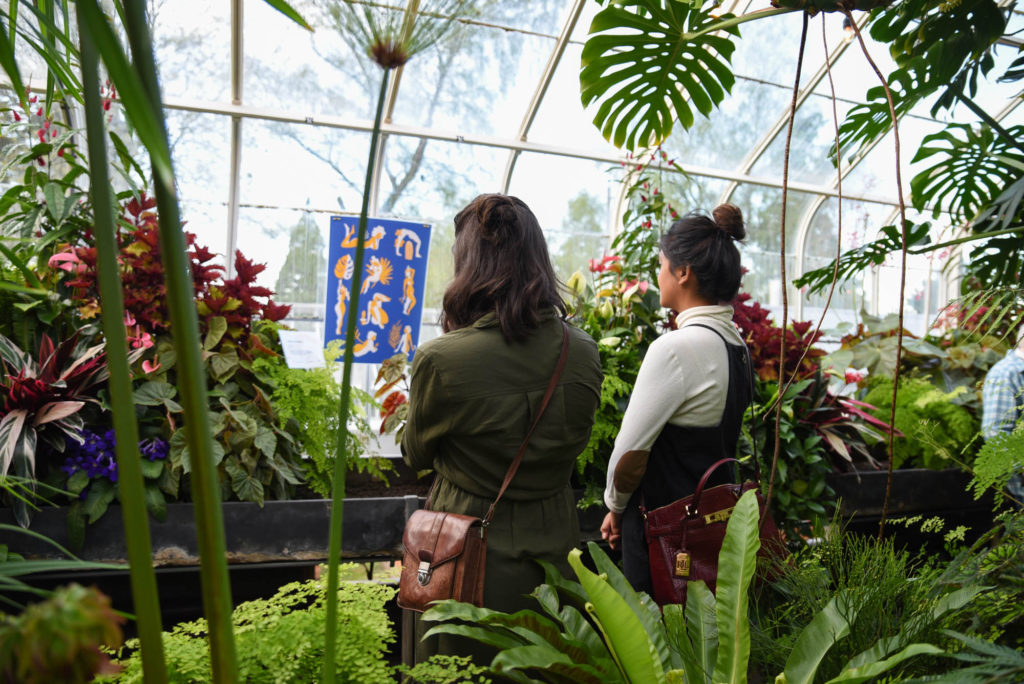
Exhibit goers looking at art and plants at the For the Love of Plants event at the Volunteer Park Conservatory.
“These will be a dark few years for the environment, but we will persevere,” said Tanya Hayes, professor at Seattle University who teaches a class on environmental politics. “We pushed forward and were able to make some positive change in recent years.”
With the election of President Donald Trump, environmentalists and members of the scientific community are worried about the future of the environment. The president is a denier of climate change, an advocate of continuing and expanding the coal power industry, and plans to cut funding to the Environmental Protection Agency (EPA) and other government programs that put money into environmental research and protection.
However, advocates of the eco- friendly movement still have reasons to hope for a greener future. Sarah Miller, a senior environmental studies major, is an advocate for the March for Science, an international event of which Seattle hosted its own iteration last Saturday.
“We can’t turn our backs on the evidence scientists have provided,” Miller said. The March for Science promoted the use of scientific knowledge and peer review as a basis for public policy, economics, public health and more. President Trump and his administration have validated the thoughts of some members of the public that believe there is no scientific evidence of climate change.
“The science around climate change is complex and hard to understand, and I think that’s why so many people deny the scientific evidence on climate change,” Hayes said. Events like the March for Science are attempting to create solidarity and raise public awareness of the importance of making informed decisions and living an environmentally friendly life. However, these events are just a start of the work that needs to be done.
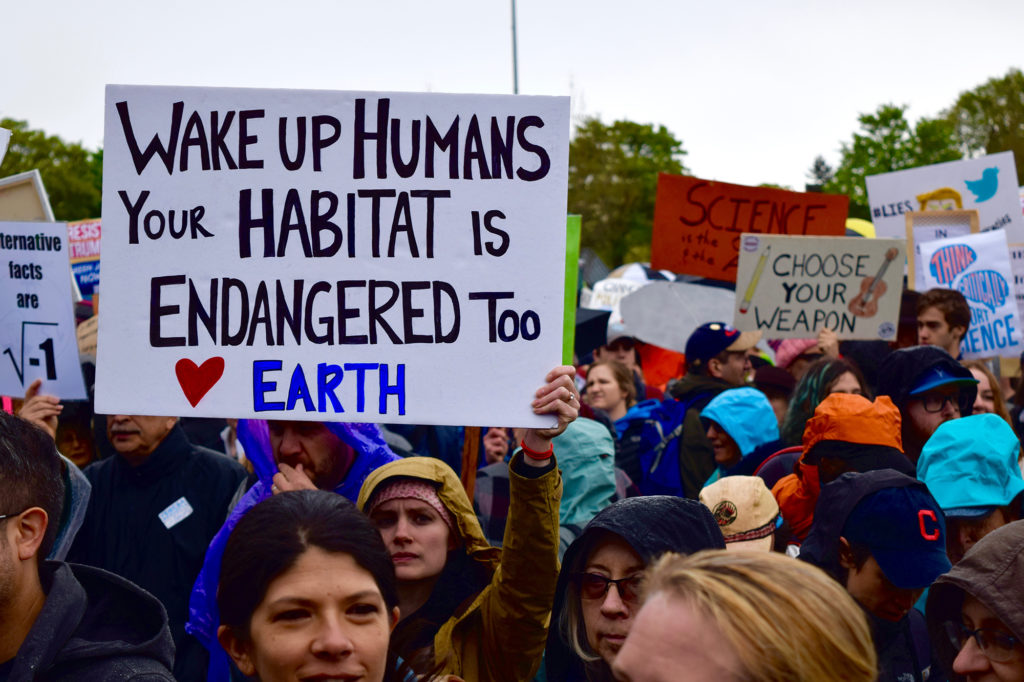
The March for Science at Cal Anderson Park brought out thousands of people, including environmental activists and allies.
“The March for Science creates solidarity, but it doesn’t open up a space for dialogue,” Hayes said. “Those who want to see environmental change need to do more. Go to town hall meetings and get involved in community events, listen to people with different perspectives and try to understand where they are coming from, and make sure your data is accurate when you are talking to someone about your views.”
Seattle U did its part to get students involved during Earth Week with events such as the Interfaith Earth Day Fair and tree plantings in the quad.
The grounds crew and Seattle U students planted 10 trees on campus last week as part of an effort to get the university accepted into “Tree Campus USA,” a program through the Arbor Day Foundation that promotes educating students on the importance of wildlife.
“Our campus is known among the community for our trees, gardens and green spaces and we want to continue that legacy for future students,” said Janice Murphy, a member of the grounds crew.
Not only do trees add aesthetic appeal to our campus, they play an important role in the ecosystem. They provide air filtration by taking in carbon dioxide and outputting clean oxygen, and provide a habitat for animals, reduce energy use by providing shade, reduce erosion and manage runoff from rain.
One of the goals of the tree planting was to show students and visitors that anyone can get involved with efforts like this. Students from a UCOR biology class helped plant the trees.
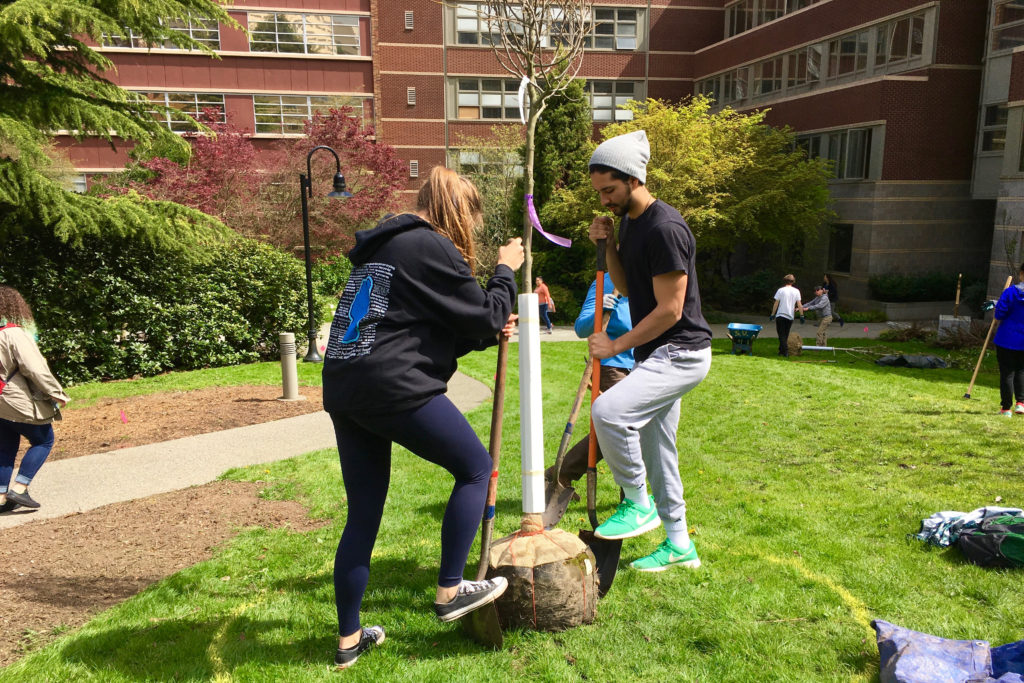
In honor of Earth Week, SU students and staff planted 9 new trees in the Quad.
“The students in the class seemed really intimidated at first, but by the end they were all in the dirt and seemed a lot more confident,” said Elena Newbrough, a sophomore environmental studies major who works with the grounds crew. “Sometimes people view working with the Earth as unachievable, so I hope that this lets them know that it really isn’t hard to get involved.”
Shannon Britton, the Facilities Grounds manager, said that some of the students she talked to had never planted a tree before. Britton hopes to inspire students to take action in their communities and continue with the important work of nourishing the Earth.
“This is an opportune chance to involve the youth with their hands, bodies and minds. This is our planet, and I want everyone to know the importance of caring for it,” Britton said.
Visitors to Seattle U noticed and were seemingly impressed by seeing groups of students planting trees. Janice Murphy said that a tour group walked by with their mouths open, and seemed to be impressed that students were planting trees in the middle of campus.
“It’s a wake up call, especially for students who don’t typically get involved with outdoor planting and gardening activities,” Murphy said. “It was inspiring to see the students working on this project and the reactions that we got.”
The tree planting events during Earth Week are just a starting point for the grounds crew. They plan on doing more work like this in the future. The crew plans to create more educational events that professors can get their classes involved in.
The Interfaith Earth Day Fair was also held on campus last week. “Compassion and resistance” was the theme of this year’s fair. The day featured live music, mindful meditation and an action center where students and event coordinators had conversations on being active members of society who advocate for change and interfaith earth justice conversations.
There were speakers from three different religious backgrounds: Catholic, Muslim and Zoroastrian. One of the goals of the event was to create solidarity based on understanding and learning from different perspectives.
“It is important to listen to perspectives other than your own.We can come from different perspectives and still take similar action,” said Sarah Turner, a grad student and grad assistant who works with the School of Theology and Ministry. She was the chief organizer behind the fair this year.
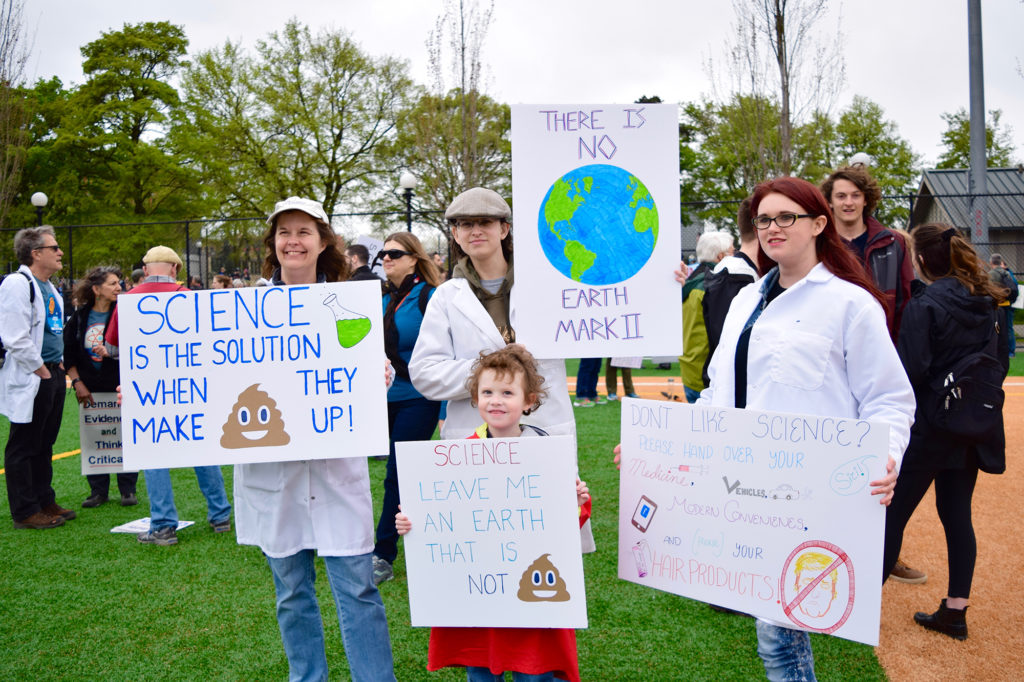
The crowd expresses individuals’ responsibility for the Earth by carrying it on its shoulders throughout the march.
“When we hear somebody else’s story, we will find something we resonate with, and that reminds us of our commonalities and helps us to be okay with diversity,” Turner said. “We don’t all have to be the same to build a relationship and take action against injustices such as harm of the earth and the people in it.”
Turner went on to talk about the correlation between social justice and environmental degradation—an issue that affects everyone, but especially those members of society who are in poverty or members of marginalized groups.
Communities of color and low income populations have been exploited by corporations who move in and pollute the land. An example of this can be seen in the area around the Duwamish River, where manufacturing plants have heavily polluted the land that once was inhabited by native Duwamish people and is now populated by a large number of low-income individuals and those from marginalized groups.
Some say environmental racism is an issue that religion can help address. “We are called to care for people, and addressing environmental issues is a way to do this. We are destroying our home, and this affects everybody. People of color and those in poverty are disproportionately affected by environmental harm,” Turner said. The fair was designed to unite students and encourage them to advocate for justice for other people and the planet. Students were also given the opportunity last week to tour the Bullitt Center, which was officially opened on Earth Day in 2015. It is the greenest commercial building in the world.
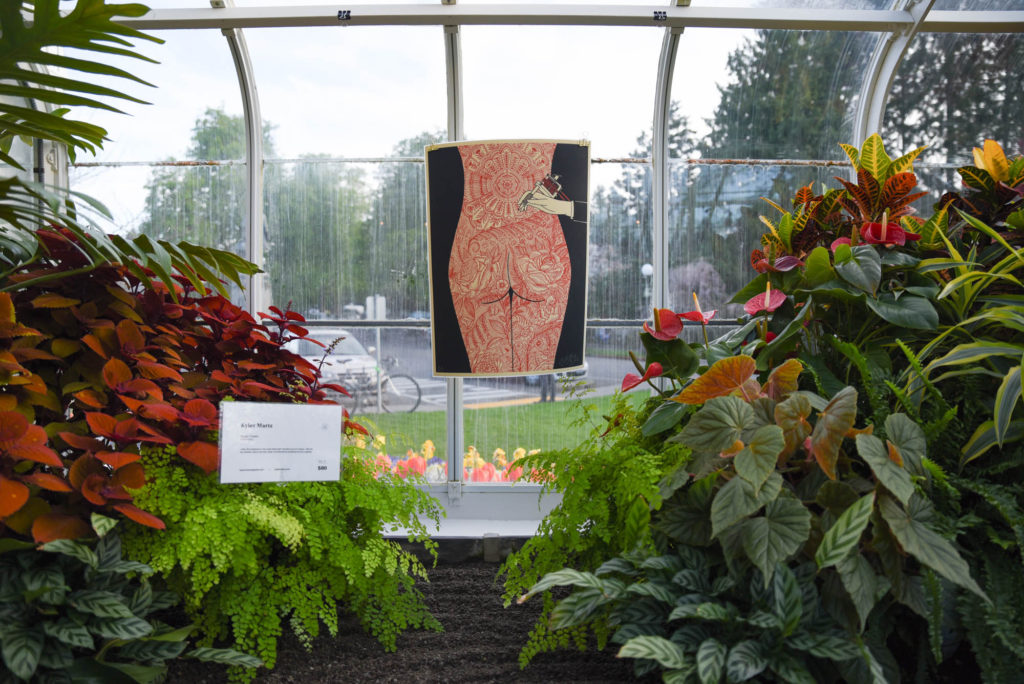
Kyler Martz’s work, “Rosie Cheeks,” displayed at the For the Love of Plants event.
The Eco Challenge, which began last week, continues to involve students and teachers competing in different challenges to earn points while benefiting the environment. Various other events throughout the city took place last week as well, including panels that discussed climate solutions and an Earth Day storytelling time. To legitimize the efforts made on campus and throughout the city to advocate care of the Earth, continued discussion and action are necessary.
The community of environmentally conscious individuals generally agree that those who want to see positive change must focus on the common goal of healing the Earth and unite and take action. Although some members of the national government are not as supportive of environmental progress, change can come from the bottom, or from a larger international movement.
“State and local governments are where there will be more push back and environmental change,” Hayes said. “Also, the participation in international political programs like the United Nations Climate Change Conference in Paris will create the possibility of national politics to be influenced to be more environmentally friendly.”

The March for Science started at Cal Anderson Park at 10am and ended at the International Fountain by the Seattle Center.
Hayes believes that local and state governments will be integral to progress within America over these next few years. Communities and states can make individual efforts to contribute to collective progress in the endeavor to create sustainability in humanity’s relationship with the Earth. She also said she believes that for any sort of systemic change to happen, even at a local level, individuals must be informed and active advocates of environmental progress.
Janice Murphy said that people “need to take environmental effort to a more personal level.”
Earth Week brought to light the pressing issues humanity will face if we are to continue our existence on this planet. Earth is the only place where humans have the current capability to live, and it must therefore be cared for.
“It can be as small as walking by trees and seeing them not as a piece of furniture, but as an important asset to our planet’s health,” Murphy said. “We need to get involved with nature.”
Bailee may be reached at
[email protected]







